 W
WArthur III, more commonly known as Arthur de Richemont, was briefly Duke of Brittany from 1457 until his death. He is noted primarily, however, for his role as a leading military commander during the Hundred Years' War. Although Richemont briefly sided with the English once, he otherwise remained firmly committed to the House of Valois. He fought alongside Joan of Arc, and was appointed Constable of France. His military and administrative reforms in the French state were an important factor in assuring the final defeat of the English in the Hundred Years' War.
Charles of Artois, son of Philip of Artois, Count of Eu, and Marie of Berry, was Count of Eu from December 1397 until his death 74 years later. He was taken prisoner by the English at the Battle of Agincourt on 25 October 1415, and was not released until 1438. In 1448, he married Jeanne of Saveuse and on 23 September 1454, Helene of Melun, but he had no children. He was appointed Lieutenant of the King in Normandy and Guyenne, as well as Governor of Paris, during the War of the Public Weal in 1465. He was succeeded by his nephew John II, Count of Nevers.
 W
WJohn of Artois, called "sans Terre" (Lackland), was the son of Robert III of Artois and Joan of Valois. The confiscation of his father's goods for attempted fraud in 1331 had left him without an inheritance.
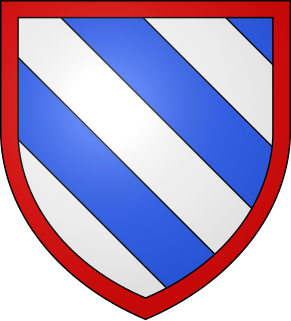 W
WArnoul d'Audrehem was a Marshal of France, who fought in the Hundred Years' War.
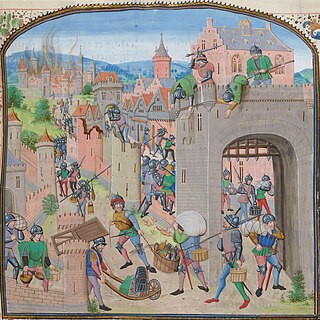 W
WAymon of Ortinge, also known as Amanieu d'Ortigue or Amanieu de l'Artigue, was a French mercenary captain during the Hundred Years War. His story is mentioned in the Chronicles of Froissart
 W
WBascot de Mauléon was a Basque soldier, mercenary and Brigand of the Hundred Years' War in the 14th century.
 W
WBernard de la Salle, was a French mercenary captain during the Hundred Years War. His story is mentioned in the Chronicles of Froissart
 W
WBour de Breteuil was a Mercenary captain of the Hundred Years War.
 W
WBour Camus, or Camus Bour Bour Lesparre, also known as Camus the Bastard was a mercenary captain during the Hundred Years War. He was of Navarrese or Gascony origin.
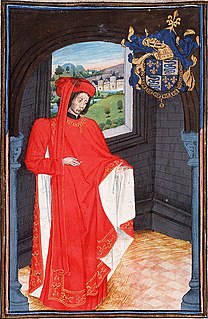 W
WCharles of Orléans was Duke of Orléans from 1407, following the murder of his father, Louis I, Duke of Orléans, on the orders of John the Fearless, Duke of Burgundy. He was also Duke of Valois, Count of Beaumont-sur-Oise and of Blois, Lord of Coucy, and the inheritor of Asti in Italy via his mother Valentina Visconti, daughter of Gian Galeazzo Visconti, Duke of Milan.
 W
WJean de Villiers, lord of L'Isle-Adam was a French nobleman and military commander who fought in the Hundred Years' War. As a supporter of the Duke of Burgundy, he fought on both sides of the conflict – English and French. He was a Marshal of France and a founding member of the knightly Order of the Golden Fleece.
 W
WLouis d'Évreux, Count of Étampes was the son of Charles d'Évreux and Maria de La Cerda y Lara.
 W
WFrancois Hennequin, was a mercenary captain during the Hundred Years War.
 W
WBertrand du Guesclin, nicknamed "The Eagle of Brittany" or "The Black Dog of Brocéliande", was a Breton knight and an important military commander on the French side during the Hundred Years' War. From 1370 to his death, he was Constable of France for King Charles V. Well known for his Fabian strategy, he took part in six pitched battles and won the four in which he held command.
 W
WHagre l'Escot was a Scottish mercenary captain during the Hundred Years War.
 W
WJames I of Bourbon, was the son of Louis I, Duke of Bourbon and Mary of Avesnes. He was Count of Ponthieu from 1351 to 1360, and Count of La Marche from 1341 to his death.
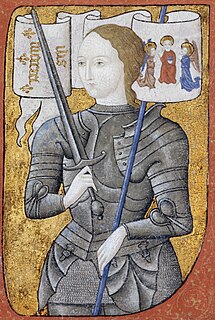 W
WJoan of Arc, nicknamed "The Maid of Orléans", is considered a heroine of France for her role during the Lancastrian phase of the Hundred Years' War, and was canonized as a Catholic saint. She was born to Jacques d'Arc and Isabelle Romée, a peasant family, at Domrémy in the Vosges of northeast France. Joan claimed to have received visions of the archangel Michael, Saint Margaret, and Saint Catherine of Alexandria instructing her to support Charles VII and recover France from English domination late in the Hundred Years' War. The as-yet-unanointed King Charles VII sent Joan to the Siege of Orléans as part of a relief army. She gained prominence after the siege was lifted only nine days later. Several additional swift victories led to Charles VII's consecration at Reims. This long-awaited event boosted French morale and paved the way for the final French victory at Castillon in 1453.
 W
WJean de Bourbon (1381–1434) was Duke of Bourbon, from 1410 to his death and Duke of Auvergne since 1416. He was the eldest son of Louis II and Anne of Auvergne. Through his mother, John inherited the County of Forez.
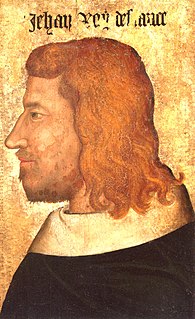 W
WJohn II, called John the Good, was King of France from 1350 until his death.
 W
WJohn II of Alençon was the son of John I of Alençon and his wife Marie of Brittany, Lady of La Guerche (1391–1446), daughter of John V, Duke of Brittany, and Joan of Navarre. He succeeded his father as Duke of Alençon and Count of Perche as a minor in 1415, after the latter's death at the Battle of Agincourt. He is best known as a general in the Last Phase of the Hundred Years' War and for his role as a comrade-in-arms of Joan of Arc, who called him "le beau duc".
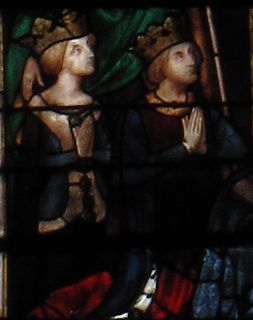 W
WJohn of Bourbon, was the second son of James I, Count of La Marche and Jeanne of Châtillon.
 W
WJohn of Orléans, Count of Angoulême and of Périgord, was a younger son of Louis I, Duke of Orléans, and Valentina Visconti, and a grandson of Charles V of France. He was the younger brother of the noted poet, Charles, Duke of Orléans, and grandfather of Francis I of France.
 W
WGilbert Motier de La Fayette Seigneur of La Fayette, Pontgibaud, Ayes, Nébouzac, Saint-Romain and Montel-de-Gelat was a Marshal of France and an ancestor of Gilbert du Motier, Marquis de Lafayette.
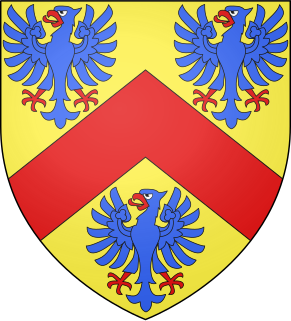 W
WGeorges de la Trémoille was Count de Guînes from 1398 to 1446 and Grand Chamberlain of France to King Charles VII of France. He sought reconciliation between Philip, Duke of Burgundy and Charles VII during their estrangement in the latter part of the Hundred Years' War. De la Trémoille was a political opponent of Arthur de Richemont within the French court. Most historians take a poor view of his career, assessing that he placed personal advancement before the public interest, though the traditional historical interpretation of the Grand Chamberlain as Jeanne d'Arc's opponent has been revised.
 W
WJean II Le Maingre, also known as Boucicaut, was a French knight and military leader. Renowned for his military skill and embodiment of chivalry, he was made a marshal of France.
 W
WLouis I, Duke of Anjou was the second son of John II of France and Bonne of Bohemia. Born at the Château de Vincennes, Louis was the first of the Angevin branch of the French royal house. His father appointed him Count of Anjou and Count of Maine in 1356, and then raised him to the title Duke of Anjou in 1360 and Duke of Touraine in 1370.
 W
WLouis de Bourbon, younger son of John I, Count of La Marche and Catherine de Vendôme, was Count of Vendôme from 1393, and Count of Castres from 1425 until his death.
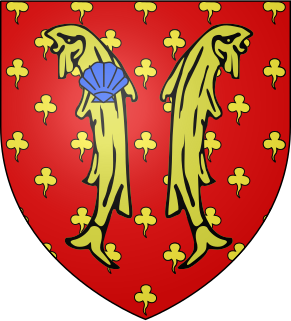 W
WGuy II de Nesle, Lord of Mello, was a Marshal of France (1348) who was killed in the Battle of Mauron.
 W
WPhilip the Bold was Duke of Burgundy and jure uxoris Count of Flanders, Artois and Burgundy. He was the fourth and youngest son of King John II of France and Bonne of Luxembourg. Philip was the founder of the Burgundian branch of the House of Valois. His vast collection of territories made him the undisputed premier peer of the Kingdom of France and made his successors formidable subjects, and later rivals, of the kings of France.
 W
WJean Poton de Xaintrailles, a minor noble of Gascon origin, was one of the chief lieutenants of Joan of Arc. He served as master of the royal stables, as royal bailiff in Berry and as seneschal of Limousin. In 1454 he was appointed a Marshal of France. Jean Poton was a leading figure on the French side in the Hundred Years War.